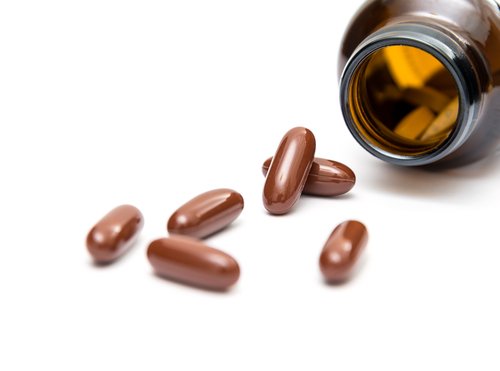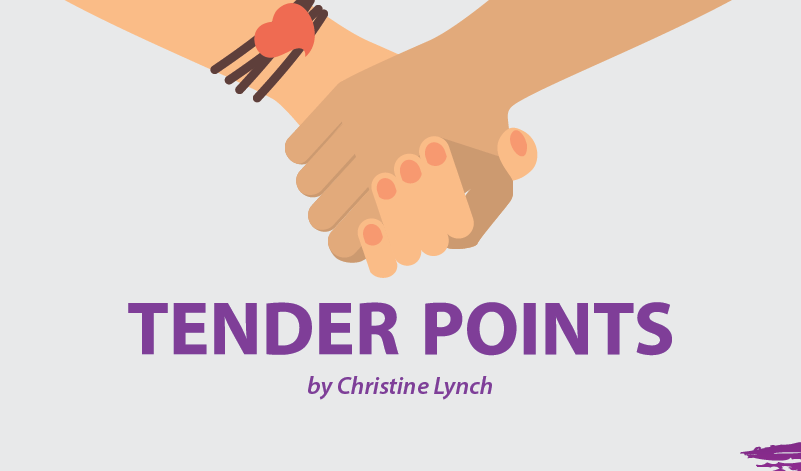Even before my fibromyalgia diagnosis, I realized the importance of keeping a list of the medications I had taken. While still bouncing from one specialist to another, trying to learn what was wrong with me, I was prescribed at least one of every class of drugs available for my symptoms. Given the unpleasant side effects many of them produced, I didn’t want to chance taking the same one twice. I couldn’t rely on memory alone, especially when each drug has both a generic and a brand name.
After my diagnosis, my rheumatologist was determined to help me feel better. New medications were prescribed at every visit. Many had no effect on my symptoms. Others had intolerable side effects. Eventually, we found one that worked. After only two pills, I thought I’d been cured. The pain eased. The fog lifted. I slept easily and awoke feeling alert. For two weeks, I felt better than I’d felt in years. Then my insides turned to liquid, and I finally had to admit that my sensitive GI system just doesn’t tolerate drugs well. Even a single pill can keep me in the bathroom for hours. Drugs that cause constipation for the rest of the world will have the opposite effect on me.
I turned next to alternative therapies. After finding relief with chiropractors, acupuncturists and massage therapists, I also tried herbal remedies they recommended. Because these natural substances were said to have no side effects, I felt confident about trying them. Unfortunately, I sometimes experienced side effects as bad as or worse than those I’d had from prescription medications. Of the ones I could take, none were particularly effective.
Having experienced symptoms since childhood, I constantly read about fibromyalgia and often learn about new supplements said to be helpful. Results of clinical studies often motivate me to try them. After having disastrous results or no results at all, I finally realized I was buying a “pig in a poke” each time. Without government regulation, bottles of supplements don’t necessarily contain what the labels say they do. This is one situation where brand names really do matter.
I could have saved myself a lot of money over the years if I’d joined Consumer Labs sooner. This is an independent research laboratory in the business of testing the contents and effectiveness of supplements. It can’t test every brand of every supplement on the market, but it tests enough of each type to make an overall assessment of effectiveness. It then reports which brands were tested (good or bad), whether the content matched the label, recommends the dosage needed and compares those brands for cost and convenience. The cost of membership is a small price to pay to avoid products that falsely represent their contents.
If you haven’t already done so, make yourself a drug list. If you have allergies to any medications, foods or herbs, be sure to list those first. Include the name of the drug you took and whether it was a brand name or a generic. If it was generic, also record the manufacturer’s name. If you’re as sensitive as I am, that can make a difference. Although the active ingredient in a generic drug must be the same as in the brand name, dyes, fillers or coatings may differ widely from one manufacturer to another. For example, I cannot tolerate the gelatin used as the shell for many capsules. Instead, I specify an organic drug with a capsule made from cellulose.
Also be sure to include the dose you took and why you took it. Later, you might consider a much higher or much lower dose for a different symptom. It also is helpful to record the date. Negative drug reactions may be linked to life factors such as stress, hormonal status or other drugs in your system at that time. Lastly, you’ll want to record the length of time that elapsed before side effects first appeared. All this information is useful in knowing what to expect in the future. Your doctors will be grateful for your list, as well.
Be sure to update your list when any new drug or supplement is taken or new side effect is experienced. And, most importantly, carry the list with you at all times. As my mother used to say, “You never know when you might get hit by a bus!”
***
Note: Fibromyalgia News Today is strictly a news and information website about the disease. It does not provide medical advice, diagnosis, or treatment. This content is not intended to be a substitute for professional medical advice, diagnosis, or treatment. Always seek the advice of your physician or other qualified health provider with any questions you may have regarding a medical condition. Never disregard professional medical advice or delay in seeking it because of something you have read on this website. The opinions expressed in this column are not those of Fibromyalgia News Today or its parent company, BioNews Services, and are intended to spark discussion about issues pertaining to fibromyalgia.



This is such good advice. Wish I had done this many years ago. Now, I just say I’ve
tried everything. I’m still searching for the thing that works!
Excellent article Christine! It is both well written and very informative. I have a list of all medications I take and plan on creating a matrix with the side effects of each.
I am curious as to what the two medications were that made you think you were cured to begin with. I know that we all different, and each of us must find the combination of things that work best for us, but just two medications sounds like a godsend.
Thank you very much for writing this. It helps reinforce things I have done and provides me with ideas for additional things to do. Now the hardest part is to actually start doing them, and keep doing them.
The first one that worked for me was Zoloft. Two weeks of bliss. The next one was several years later. That was Cymbalta. I was only able to take each of them for about 2 weeks, but during that time I felt like a normal human being again. But, yes, every person is different. What worked for me won’t necessarily work for anyone else. Good luck with your search.
I’m super sensitive as well, can’t tolerate any drugs. Cymbalta nearly killed me, omg. So, I have a large baggie filled with pill bottles of stuff that I couldn’t tolerate. I’m now pursuing more Eastern type treatment and trying to reduce the inflammation with turmeric and ginger, I’ve knocked back the pain considerably, but still have a long way to go….it’s hard trying to treat yourself, but at least I know that acupressure won’t put me in the ER.😉
Lol, large baggie filled with pill bottles. Glad I’m not the only one, I have two of those. Could probably fill a third with the vitamins I try to take. Oh well, such is life for right now. Hopefully things will get better in the future instead of still tracking downhill.
I find it very helpful if you get all prescriptions filled at same pharmacy and they will print you out a list with everything you’ve filled and will update it (should be at no cost). I use this list to take to new doctors and find it more accurate and very convenient.
Good idea, I do that as long as the pharmacy has what I need. It’s such a burden going to the second pharmacy. Because I wasn’t there the previous months they have to call my doctor to verify the prescription (controlled items). The biggest inconvenience if needing to back every week, on occasion twice in a week, because of the different doctors and dates the prescriptions need to be filled.
Good Luck All!